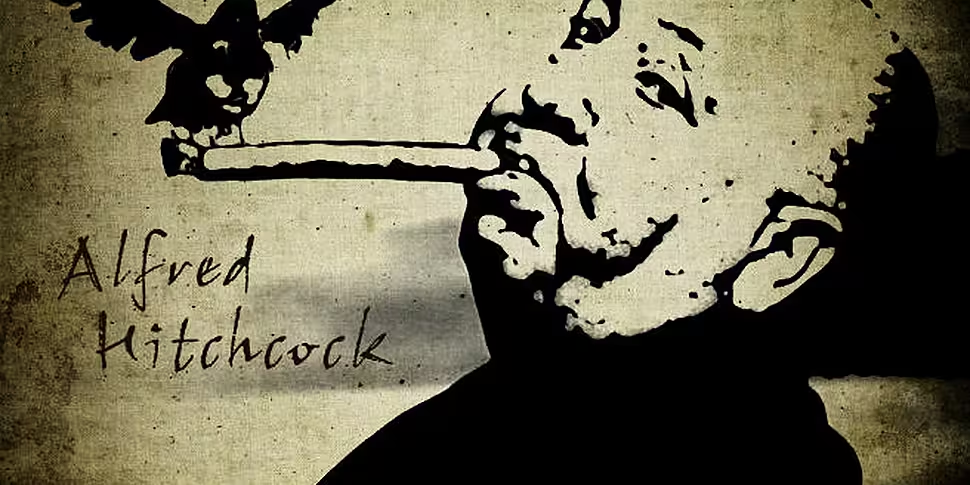What is drama, after all, but life with the dull bits cut out - Alfred Hitchcock
In 1996 the movie Scream was released. Telling the very familiar story of a small town terrorised by a killer, this work only stood out from the hordes of similar movies because of one thing: it was a scary movie that taught the audience all about scary movies. In a variety of different ways the characters tell the audience, and each other, what is going to happen during the movie based on what typically happens in this scenario.
During the phone call in the opening scene and the speech on how to survive horror movies the movie explicitly addresses the patterns which make scary movies all too predictable. While these rules are a little dated by now, Wes Craven and the Scream franchise were good enough to give us an updated list in the 2011 Scream 4. Though every genre and sub-genre of storytelling has these general rules and tropes it is scary movies or thrillers which can exploit them better than anyone else.
Scream 4 points out, again very overtly, how the attempted reinvention of a genre can be predicted by the preceding rules; in effect you can predict what will happen because it is the antithesis of what you would normally expect to happen. Other genre stories like Cabin in the Woods, Game of Thrones, the Deadpool series, and Sunset Boulevard use the established rules as a tool to further their storytelling.
It was the great filmmaker Alfred Hitchcock, however, who not only laid down some of the foundational tropes in thriller genre but who was also one of the first to manipulate them to further his own storytelling technique. Dubbed 'the master of suspense' Hitchcock never really relied on surprise to excite or frighten his audience. His main tool was, instead, letting the audience know what was going to happen without telling them how or when exactly.
Hitchcock understood that foreboding knowledge is a key component to any thrill and heightens the climactic rush. So he let you hear the clicking as the roller-coaster climbed to the top, let you see the sky creep toward you, and let you feel the wind and the creaking of metal just before he dropped you over the edge. Even today, after time and experience have desensitised us to what would once have been terrifying, Hitchcock remains enshrined as a legendary filmmaker and thrilling storyteller. What accounts for this sustainability of reputation is Hitchcock's style.
Born in England in 1899 Hitchcock's childhood coincided with the rise of cinema. As Hitchcock progressed through diapers and school, cinema moved from tiny clips of film capturing moments in life to longer commercially exhibited 'nickelodeons'. It was in 1922 that Hitchcock and the movie world finally fully came together as the creative cinephile turned his hand at directing his first movie, Number 13. While he didn't encounter immediate success Hitchcock persevered with further failed works until everything changed in 1926. It was in 1926 that Hitchcock began work on his first thriller, The Lodger, which, unsurprisingly, would become his first movie success.
This year also saw him marry Alma Reville, who he would always acknowledge as a major force in his life and one of the main reasons for his success as a director. With his wife at his side and the successful The Lodger to his name Hitchcock's career in cinema truly began. Hitchcock would build on this success as he continued to work in British cinema. 1929 saw Hitchcock begin work on Blackmail. While this didn't stand out from the rest of his body of work it became remarkable as the studio, British International Pictures, decided to make it into a 'talkie'; this was the first British sound feature film.
After making cinematic history Hitchcock continued as a behemoth in British cinema until 1939 when he moved to Hollywood. This move was a great loss to British cinema but it afforded Hitchcock greater room to expand as a director as California offered fields of eager talent, giant studios, deep pocketed investors, and a severe lack of Luftwaffe bombs. Though a great number of Hitchcock's trademarks and innovations began in Britain they expanded while in Hollywood. This included his use of prolonged shots, iconic landmarks, on location filming, and voyeuristic shooting which forced the audience to see the action from the point of view of a secret observer.
The 1950s and '60s saw Hitchcock reach the peak of his success and fame as the movie watching world flocked to his now infamous thrillers: such as Strangers on a Train, Dial M for Murder, Rear Window, The Man Who Knew Too Much, Vertigo, North by Northwest, Psycho, and Birds. This period also saw him reach the height of his infamy as people began to question his persisting use of cold female leads and his bold use of violence and sexuality pushed the boundaries of the day. After Tippi Hedren, the lead actress in Birds, made claims of deliberate ill-treatment at the hands of Hitchcock, namely the torpedoing of her career, the debate about Hitchcock's attitude toward women exploded with people arguing both that he was a misogynist and nothing of the sort.
In 1980 Alfred Hitchcock passed away. What he left behind was a legacy as, according to Richard Avedon of the Daily Telegraph, 'Unquestionably the greatest filmmaker to emerge from [Britain], [who] did more than any director to shape modern cinema' and a plethora of amazing films which still thrill to this day. Though he never received an Academy Award, Hitchcock was celebrated and revered by his peers. When receiving one of these awards, the AFI Lifetime Achievement Award, Hitchcock remarked that '[without Alma I] might be in this room tonight, not at this table but as one of the slower waiters on the floor'; she died two years after him.
Listen back as Patrick talks with a panel of film experts and biographers about the life and work of Alfred Hitchcock. Were his films all that great? And if so what made them so? What did he mean by 'actors should be treated like cattle'? And how did he change how films were made? What was the real story behind that famous silhouette?









